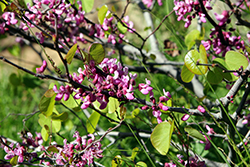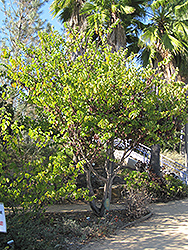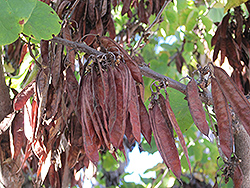It's all about ...
plants

Height: 15 feet
Spread: 15 feet
Sunlight:
![]()
![]()
Hardiness Zone: 7b
Other Names: California Redbud
Description:
A spectacular and hardy spring bloomer, with dazzling hot pink flowers held tightly on bare branches in early spring; rounded foliage with bright yellow fall foliage; a top choice large shrub or small ornamental tree for specimen use
Ornamental Features
Western Redbud has hot pink pea-like flowers along the branches from early to mid spring before the leaves. It has bluish-green deciduous foliage which emerges light green in spring. The round leaves turn yellow in fall.
Landscape Attributes
Western Redbud is a multi-stemmed deciduous shrub with an upright spreading habit of growth. Its average texture blends into the landscape, but can be balanced by one or two finer or coarser trees or shrubs for an effective composition.
This shrub will require occasional maintenance and upkeep, and should only be pruned after flowering to avoid removing any of the current season's flowers. Deer don't particularly care for this plant and will usually leave it alone in favor of tastier treats. Gardeners should be aware of the following characteristic(s) that may warrant special consideration;
- Insects
Western Redbud is recommended for the following landscape applications;
- Accent
- Mass Planting
- General Garden Use
Planting & Growing
Western Redbud will grow to be about 15 feet tall at maturity, with a spread of 15 feet. It has a low canopy with a typical clearance of 1 foot from the ground, and is suitable for planting under power lines. It grows at a medium rate, and under ideal conditions can be expected to live for 60 years or more.
This shrub does best in full sun to partial shade. It is very adaptable to both dry and moist locations, and should do just fine under average home landscape conditions. It is considered to be drought-tolerant, and thus makes an ideal choice for xeriscaping or the moisture-conserving landscape. It is not particular as to soil type or pH. It is highly tolerant of urban pollution and will even thrive in inner city environments, and will benefit from being planted in a relatively sheltered location. Consider applying a thick mulch around the root zone in winter to protect it in exposed locations or colder microclimates. This species is native to parts of North America.
This plant is not reliably hardy in our region, and certain restrictions may apply; contact the store for more information.


